It’s been my goal for some time to put together a hand-drawn animation pipeline/station, if you will. I’ve been acquiring the different things equipment necessary: animation disk, the camera stand, the software, but a big piece of the puzzle is the animation desk. Now, you can buy animation desk online, but a great part of animation’s history: building your own animation desk, is an all but forgotten hobby.
So, I began making plans. I wanted to build the whole thing for about $100 dollars. Yeah, sounds cheap, but it can be done.
My only prerequisite for the project was to find a small hard wood (none of this particle board stuff) computer desk and convert it to an animation desk. I eventually found the exact desk I was looking for on Craig’s List. I passed up a ton of larger desk for something small because I didn’t want it to be bulky and heavy. The desk I purchased is 44″ wide and 26″ deep.
Here’s my initial design that my Dad altered appropriately.
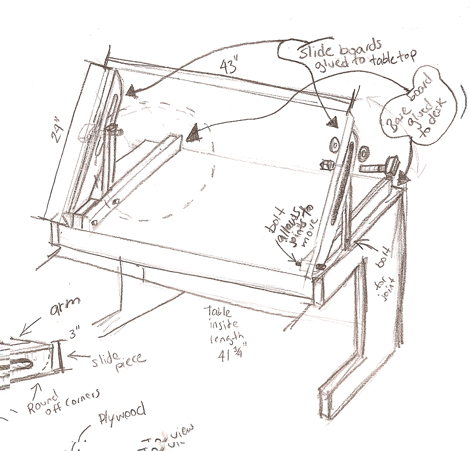
Step 1: Secure a foundation to build the new table top on. We used 1″x4″ and 1″x 2″ pine for this. These were screwed in from underneath.

Step 2: I wanted to have the option of adjusting the angle of my desk, so we made slots from the 1″x 4″.

Step 3: We cut the slide arm from a 1″x 2″.

Step 4: For the slide arm to work properly, we needed to a spacer.
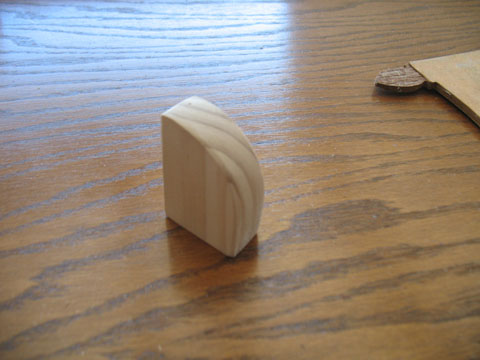
Step 5: Before drilling holes, we used a nail gun to hold the spacer in place.
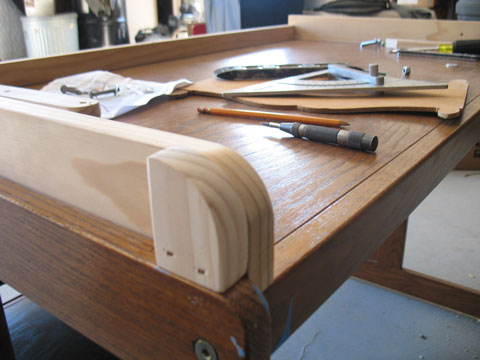
Step 6: We drilled our hole to fit a 5/16″ bolt and fit the the slide in place.
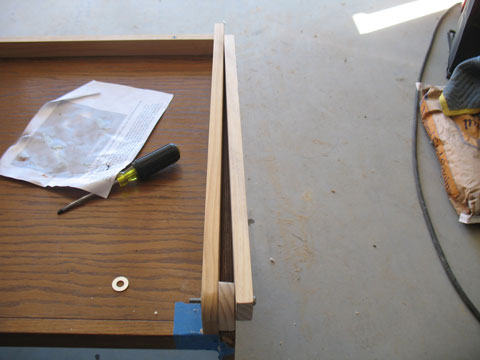

Step 7: We then drilled holes and fastened the slide arm in place using a 1/4″ bolt for the frame side and a 3/8″ bolt for the slide.
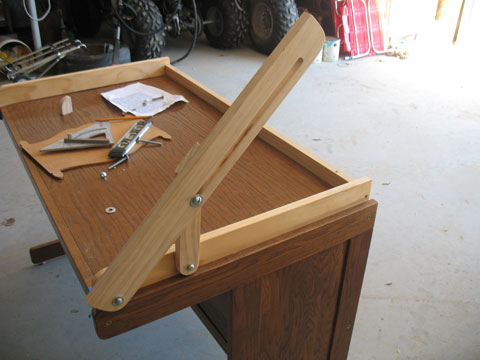

Step 8: Click Copy and Paste to duplicate the other side. Ta Daaaa!

At it’s highest, the desk top sits at a 45 degree angle. This design doesn’t allow for it to lay flat, but it can angle down to around 20-25 degrees if necessary. It’s comes in handy when transporting the desk.

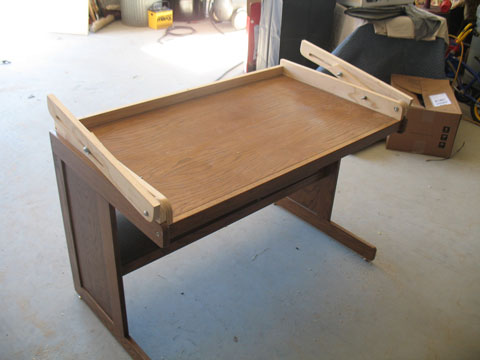
Step 9: Here’s Dad nailing a 1″x 2″ to add support.
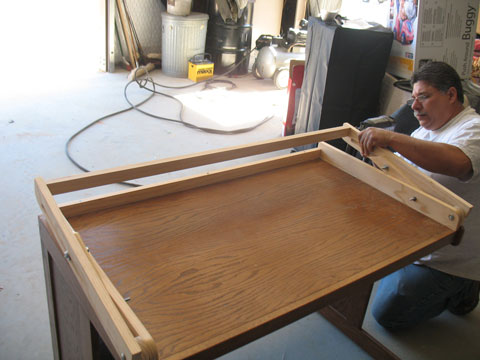
We added a second support at the bottom as well.
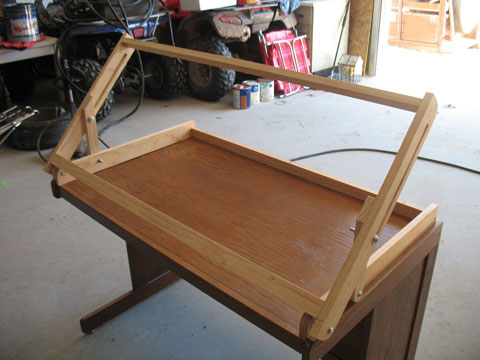
Step 10: We lined up the 48″x 24″ table top and nailed it down.

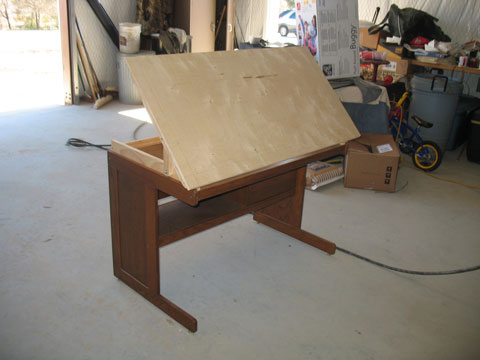
Step 11: We penciled the 16 1/2″ diameter circle needed to fit the Alan Gordon animation disk.

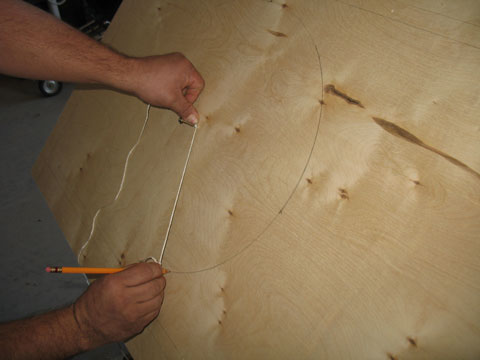
Step 12: We drilled four holes to help us when cutting it out.
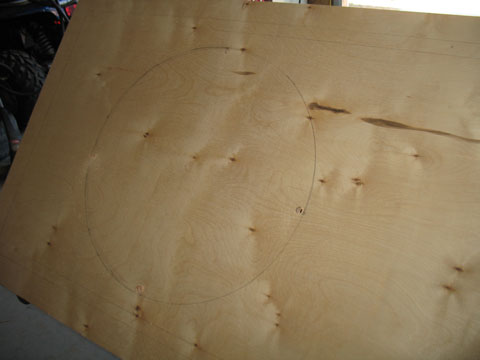
Step 13: I got to work cutting that hole. I was so afraid I was going to cut it wrong. This hole is the most important part of the desk cause if cut wrong, the disk will not spin freely.


Step 14: After cutting the hole, we decided to add one final support to strengthen the center of the table top.

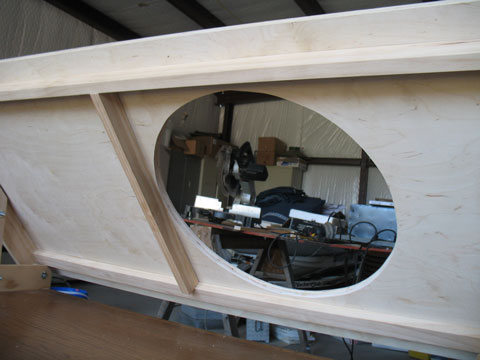
Step 15: We added these blocks to strengthen the hold just to make sure it would not slip.
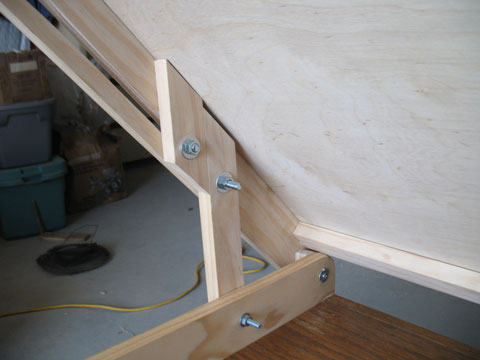
I put the animation disk in place.
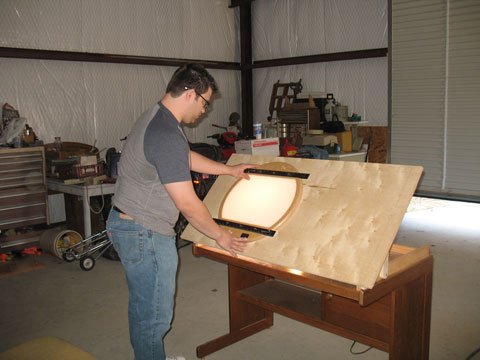
Step 16: I spinned the disk to find the spots where it would stick and sanded those down till it could spin freely.

This only took us a total 5 hours to build. All the credit goes to Dad, who is a great carpenter, and who also owned all the correct tools necessary to build this desk. I could not have built this on my own.
Here’s the desk set up in my office. I’ve added all the proper things every traditional animation desk needs. I plan to stain the wood to match the rest of the desk and add trim to the table top. I’m deciding if I want to finish the top with wood veneer or formica. I’m not sure what would look best.
I would love to here everyone’s thoughts and questions. Plus, how do you think I should finish off this table?
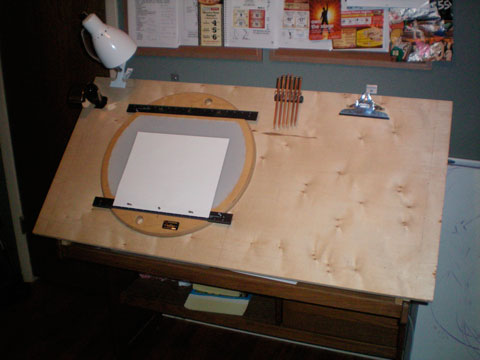
In a future posts, I’ll outline my process of animation from this desk into the computer.
Rock on! Looks like you are ready to Rock-N-Roll!!!
By: J. Schuh on January 26, 2009
at 12:51 am
Been looking into building an animation table for quite awhile and this is definitely the simplest plan I’ve found so far. The main question I have for you is what light source did you use for the backlighting? Does the Alan Gordon Disc come with a light? I wasn’t able to find much information on the disc.
By: N. Aberle on June 7, 2009
at 2:11 pm
Thanks for the compliment on the table. The light source I’m using is a simple industrial clip light with an aluminum sleeve. I think I got it for under $5 at Walmart.
By: Rio on July 22, 2009
at 3:07 pm
Wow, you and your dad did a great job. I’m looking to build my own animation desk someday too. Mind if I take after your design? : )
Also, I’m interested in where you purchased your animation disc?
By: Kwok on June 7, 2009
at 3:44 pm
Thanks! You can absolutely use my design. I got my animation disc off of Ebay to save money. You can buy them straight from the manufacturer as well at http://www.alangordon.com/s_animation.html
Have fun!
By: Rio on July 22, 2009
at 3:11 pm
it’s really cool …:(unfortunately i can’t build it coz i’m too young to build it…
By: cheng on September 22, 2009
at 2:27 am
geee! It looks great.
By: iorr on October 6, 2009
at 12:20 am
Hey there, this is really cool!!! I built my first lightbox also with my dad 🙂
Enjoy drawig on it,
Claudi
By: Claudia on February 17, 2010
at 4:29 pm